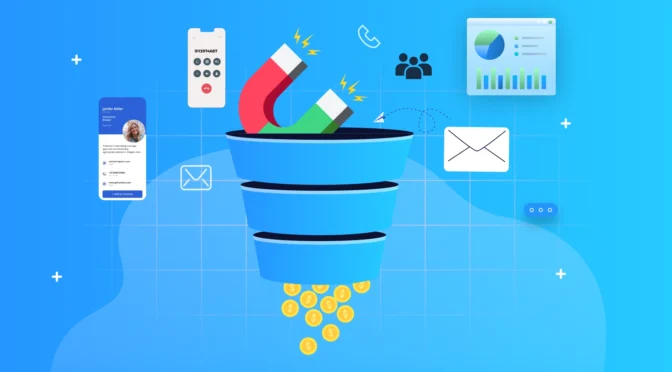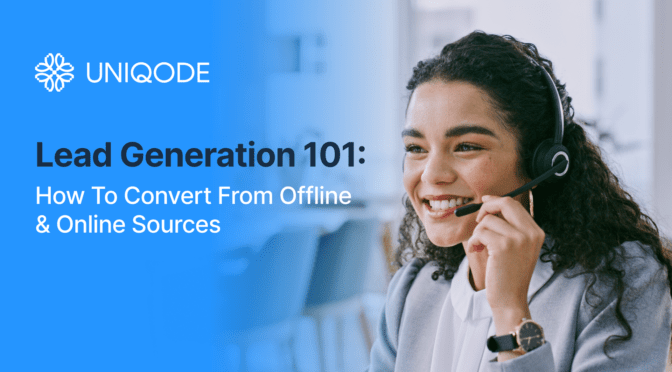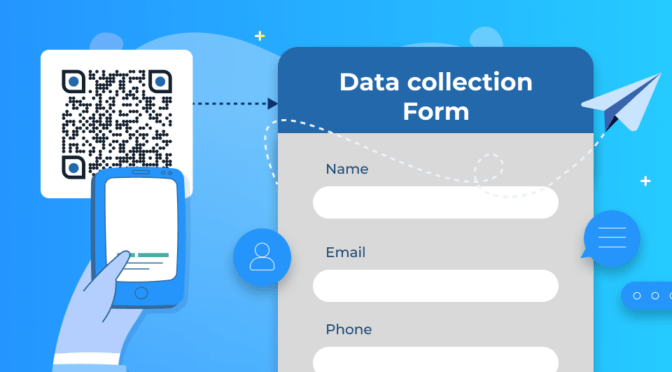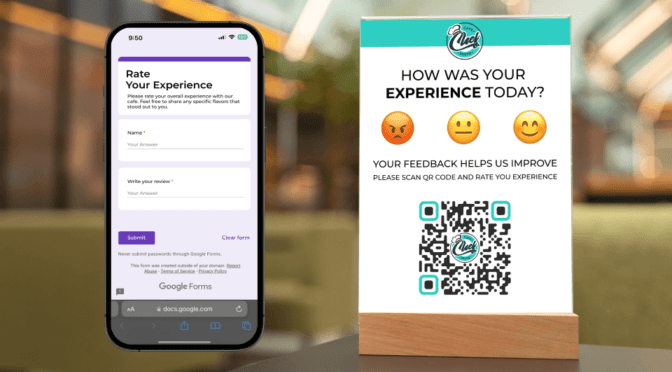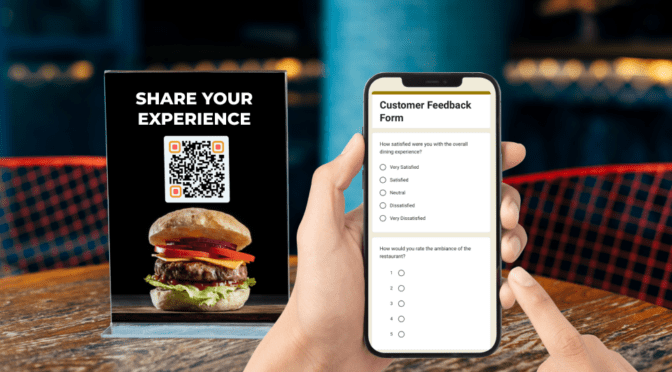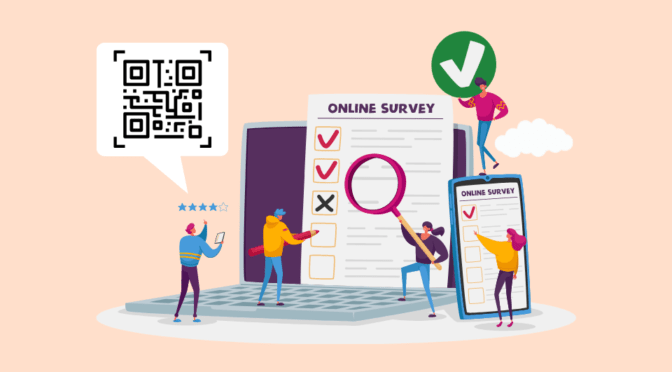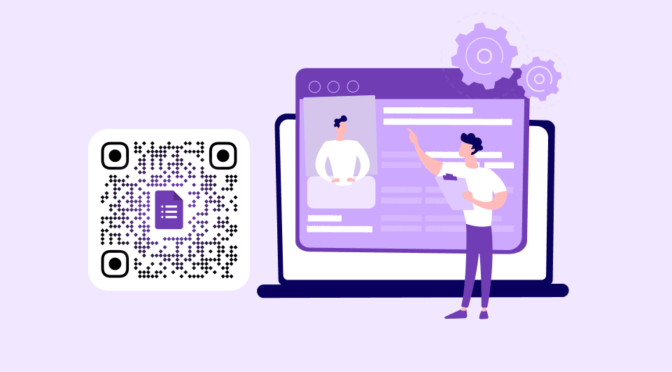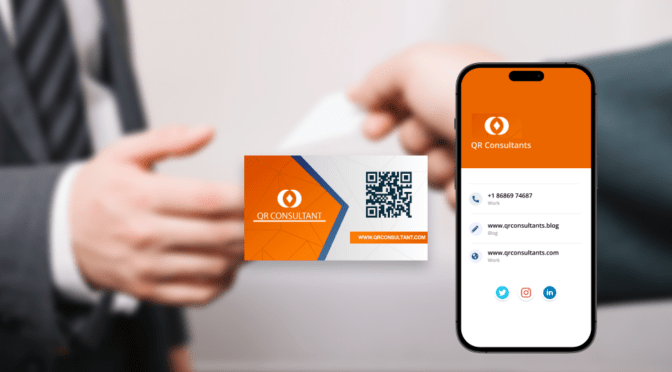Let’s be real; real estate lead generation isn’t as easy as it used to be. You’ve probably already hit a wall if you’re still relying on yard signs or hoping someone walks into your office. Figuring out how to get real estate leads that are interested (and qualified) feels like trying to find a needle in a haystack.
The truth is, most traditional lead generation methods for real estate just don’t cut it anymore. But here’s the good news: You don’t have to keep spinning your wheels.
In this guide, we’ll break down the top online and offline real estate lead generation tactics that work in 2025.
Let’s dive into the best lead generation techniques for realtors, and finally start generating leads that convert.
Table of contents
- What is real estate lead generation?
- Top 8 online real estate lead generation strategies
- Top 6 offline real estate lead generation strategies
- How do you measure your lead generation success?
- Turn every real estate interaction into a lead with Uniqode
- Frequently asked questions
What is real estate lead generation?
Real estate lead generation attracts and converts prospects (buyers, sellers, renters, or investors) into actual customers for your real estate business. These prospects, or leads, are the lifeblood of any successful real estate career.
Why is lead generation so important for real estate agents?
- Consistency = Stability: A reliable lead generation strategy for realtors ensures you always have a pipeline of opportunities.
- Higher quality leads: When done right, you’ll attract prospects who are more qualified and ready to act.
- Business growth: Want to scale your business or expand into niches like real estate, mortgage leads, or lead generation for real estate investors? It all starts with the right lead-gen system.
Top 8 online real estate lead generation strategies
Homebuyers and sellers start online; digital strategies are necessary for effective real estate lead generation. Online methods offer scalability, precision, and reach that traditional tactics can’t match. In this section, we’ll break down the most effective online lead generation for real estate agents.
1. Optimize your real estate website
Having a well-designed website isn’t just about looking professional. It’s one of the most powerful real estate lead generation channels, especially when optimized for local search. Since real estate is a highly localized business, showing up on Google when someone searches for “homes in [your area]” can give you a major advantage.
Here are some tips to make your website a high-performing lead generation tool for real estate agents:
1. Create location-specific pages
Set up individual pages for each city, neighborhood, or region you serve. These pages should include hyperlocal content, such as neighborhood guides, school and hospital information, commute details, and nearby amenities.
FultonGrace does this brilliantly with dedicated pages for different Illinois neighborhoods.

2. Use regional keywords strategically
Sprinkle your content with geo-targeted keywords like “real estate agent in [City/Neighborhood]” or “buy a home in [Location]” to boost local SEO. These terms align with how buyers search online and can help you rank higher in relevant search results.
- Write detailed property descriptions
Go beyond square footage and price; paint a picture. Use compelling, informative descriptions and include tags or filters for search features like price range, number of bedrooms, property type, or location. This not only helps with SEO but also improves user experience.
Redfin nails this with dynamic filters tailored to the buyer’s intent: buy, sell, or rent.

4. Organize your site navigation
User experience is key. Structure your site so users can easily browse listings by category: Residential, Commercial, Rentals, etc. A clean, intuitive navigation layout makes it easier for visitors to find what they need and stay longer.
Valords, a real estate agency in Barcelona, has a minimalist, clear menu that enhances user navigation and conversion.

5. Add lead capture features
Integrate forms, pop-ups, or chatbots throughout your website to capture visitor information. Offer a downloadable resource (e.g., “Guide to Buying Your First Home in Chicago”) in exchange for an Email ID. This feeds your online real estate lead generation funnel while providing value.
⚡Pro tip:Create a QR Code and embed it on your landing page to encourage your prospects to scan and contact you easily!
2. Create an appealing social presence
You’re limiting your potential if you’re only running local ads or promoting neighborhood events. To truly scale your real estate lead generation strategy, you need to establish a social media presence and show up as more than an agent.
1. Build a relatable and aspirational personal brand
Your content should balance professional and personal; think listings, behind-the-scenes videos, neighborhood spotlights, and real-life moments. Don’t just promote homes; promote the feeling of living there.
Carrie Nicholson does this beautifully on Instagram. Her feed blends scenic shots of Hawaiian living with real estate updates, making the dream of owning a home in paradise feel tangible.

2. Make your bio a lead magnet
Turn your social media bio into a lead-gen asset using tools like Uniqode’s Linkpages. Instead of a single link, you can share a mobile-friendly, branded page that includes:
- Property listings
- Virtual tours
- Contact forms
- Testimonials
- Booking links for consultations
⚡Pro tip:Uniqode offers customizable templates, so your Linkpage can reflect your brand personality and reduce friction for potential leads, especially those reaching you through mobile.
3. Post consistently and with purpose
Use a content calendar to stay consistent. A few content ideas:
- Weekly listings (“Just Listed” or “Deal of the Week”)
- Quick homebuyer tips
- Market updates for your area
- Client testimonials or case studies
- Real estate myths vs. facts
- Personal stories (your first sale, funny open house stories, etc.)
- Each post should either build trust, spark curiosity, or invite action.
4. Use reels and video tours
Short-form video content gets massive reach. Create Instagram Reels or TikToks with walkthroughs, “before and after” renovations, or quick “3 things to know before buying in [City].” Videos build stronger emotional connections, which is key in lead generation for real estate agents.
5. Engage like a human
Respond to comments, DM inquiries, and even unrelated questions. The more genuine you are, the more likely people will trust you, and that trust often translates into leads.
3. Boost your email marketing efforts
When done right, content and email marketing can become your most cost-effective and consistent real estate lead generation channels. The average email open rate for real estate is 37.18%, which is higher than industries such as automotive or tech, which hover around 29%.
That’s a strong signal: real estate prospects actively seek helpful information in their inbox.

Here’s how to turn content and email into a long-term lead generation engine:
1. Start by building an email list
Grow your email list both online and offline. One easy way? Share your digital business card at open houses, community events, or online through social media. Ask for email opt-ins in exchange for:
- Neighborhood guides
- Market updates
- Personalized home recommendations
This creates a warm list of leads genuinely interested in your services.
2. Segment and personalize
Group your leads by interest, location, or transaction stage (buyer, seller, renter). Then, tailor your content to match. This makes your emails feel more relevant and boosts open and click-through rates.
3. Send value-packed newsletters regularly
Don’t just blast listings; nurture your audience with content that helps them make informed decisions. A well-planned newsletter can cover:
- Neighborhood guides (history, architecture, amenities)
- In-depth market reports (price trends, inventory, forecast)
- How-to guides (first-time buying tips, selling strategies)
- Informative videos (virtual tours, “Ask a Realtor” Q&As)
A balanced email strategy targets all stages of the funnel; curious browsers, engaged prospects, and ready-to-transact buyers or sellers.
4. Create blog content to capture organic traffic
Your blog can be a powerful real estate online lead generation tool if it addresses real questions buyers and sellers are asking. Think SEO-first:
- “How to Buy Your First Home in [City]”
- “Top 8 [City] Neighborhoods to Live In”
- “What to Know Before Renting in [Area]”
Knight Frank publishes high-quality blog content for buyers, landlords, renters, and investors. Their strategy boosts trust, traffic, and conversions.

5. Leverage lead magnets to capture emails
Don’t wait for leads to find you. Offer something valuable in exchange for their email address. A few lead magnet ideas:
- “2025 Homebuyer Checklist”
- “Local Real Estate Trends Report”
- “Step-by-Step Guide to Selling Your Home”
Add these as downloadable PDFs on your blog or homepage with a clear CTA.
Or, you can offer valuable information in the email and add a professional email signature in the CTA for prospects to contact you. An email signature for a real estate agent can include their expertise, mobile number, or even a QR Code that leads the prospect to an external link or a digital business card.
4. Offer virtual tours to expand your reach
Virtual tours offer an efficient way to generate real estate leads in an industry where time, distance, and scheduling conflicts often slow down buyer interest. They help you reach a wider audience, minimize no-shows, and speed up the home-viewing process.
Here’s how to do it right:
1. Livestream walkthroughs for real-time engagement
Platforms such as Instagram Live, Facebook Live, and even Twitch allow real-time property tours where you can interact with viewers directly via comments or DMs.
Answer buyer questions on the fly. Additionally, highlight unique features they may not notice in photos. Promote limited-time viewings to create urgency and FOMO.
⚡Pro tip:Add a QR Code in the virtual background and connect with prospects easily!
2. Record and share high-quality prerecorded tours
Not every buyer can attend live sessions. Uploading prerecorded video walkthroughs to your website, YouTube, or listing platforms allows leads to view properties at their own convenience.
- Use a smartphone or DSLR to record smooth, narrated walkthroughs
- Edit for clarity. Add floor plans, music, or voiceovers
- Upload across multiple channels: YouTube, website listings, social media
⚡Pro tip:Platforms like Giraffe360 help realtors create polished, 360° walkthroughs without a full production team. It’s perfect for agents who want professional-quality results without the hassle.
3. Integrate tours into website listings and social media
Make it easy for potential buyers to explore your listings without navigating to different platforms. Embed videos directly into:
- Listing pages
- Property description sections
- Instagram or Facebook posts with clickable links
Many real estate agencies now include a “Virtual Tour” button on each listing, offering seamless, instant access. This reduces friction and encourages deeper engagement.
4. Create interactive 3D or 360° experiences
Take things a step further with immersive virtual tours using tools like Matterport or EyeSpy360. These let users:
- Walk through rooms at their own pace
- Zoom in on features
- Switch floors or angles
Interactive tours work exceptionally well for long-distance buyers or international clients, and they’re one of the best real estate lead generation tools for luxury or commercial properties.
5. Use Google Ads and Facebook Ads to drive targeted traffic
If you’re looking for ways to generate real estate leads fast, running paid ads on Google and Facebook is a must. These platforms help you reach people who are already looking for homes, properties, or real estate services in your area, and convert them through sharp targeting and clear CTAs. You can also retarget visitors or leads captured through your digital business card for instance, people who scanned your digital business card at an open house or event can be shown tailored ads later to stay top-of-mind and guide them toward conversion.
Why Google Ads?
Google Ads lets you tap into high-intent leads. If someone’s searching “buy a 2BHK apartment in Chicago,” chances are they’re ready to act.
In a lead generation case study by Single Grain, a business was able to cut its cost per lead by 82 percent and increase leads by 300 percent through smart Google Ad optimization. The trick? Using geo-targeted keywords, compelling ad copy, and clean landing pages.
⚡Pro tip:Target long-tail keywords like “3BHK homes near [local school name]” or “affordable housing in [city]” to capture local traffic. These keywords attract less competition and bring in better-quality leads.
Why Facebook Ads?
Facebook offers powerful demographic and behavioral targeting. You can show ads to newly engaged couples, people who’ve recently moved, or users browsing real estate pages.
A success story from MG Motor India showed how Facebook Lead Ads led to over 13,000 test drive bookings and reduced the lead acquisition cost. They used instant lead forms, which auto-filled user data, reducing friction.
⚡Pro tip:Run carousel ads showing different properties, or offer gated content (like a free “2025 Real Estate Trends” report) via lead forms. Pair these with retargeting ads for users who visited your site but didn’t inquire.
Key tips to optimize your ads:
- Use location-specific visuals (e.g., skyline of your city or a landmark)
- Always A/B test different versions of your ad copy and creative
- Direct traffic to a high-converting landing page or a Linkpage with all your listings, contact forms, and virtual tours
6. List services and leverage lead purchase platforms
Sometimes, the best way to generate real estate leads is by putting your services exactly where buyers are already searching. This is where online service directories and lead marketplaces come in handy, especially for new real estate agents looking to get their first few clients.
1. List on high-traffic platforms
Sites like Zillow, Realtor.com, and even Google Business Profiles (formerly Google My Business) are trusted by buyers and renters. These platforms rank high on search engines and receive millions of monthly visits from people actively looking to buy, rent, or invest.
⚡Pro tip:Make your profile shine. Add high-quality photos, reviews, service specialties, and a booking link. A complete listing can increase visibility and build instant trust.
2. Use lead buying platforms (but choose wisely)
While not always ideal for long-term growth, buying real estate leads from platforms like BoldLeads, Market Leader, or Realtor.com’s Premier Agent can quickly fill your pipeline, especially if you’re just starting out or entering a new market.
However, not all leads are equal. Make sure to:
- Choose a platform that filters by location and property type
- Set a follow-up system to respond quickly (speed matters!)
- Track your cost per acquisition (CPA) and drop platforms that don’t perform
7. Optimize Google My Business to get local visibility
If you’re not on Google My Business (GMB), you’re missing out on one of the easiest ways to generate real estate leads, especially from people searching for agents “near me.”
According to Google, 76% of people who search for something nearby on their smartphone visit a business within 24 hours, and 28% of those searches result in a purchase. In real estate terms? That means foot traffic, phone calls, and site visits from high-intent buyers.
Here’s how to turn your GMB profile into a lead magnet:
1. Claim and complete your profile
- Add your full business name, address, and phone number (NAP consistency is key)
- Choose relevant categories like “Real Estate Agent,” “Real Estate Agency,” or “Property Consultant.”
- Upload high-resolution images of listings, office, team, and neighborhoods you serve
2. Use keywords in descriptions and posts
Include location-specific and service-based keywords like:
- “Top-rated real estate agent in [City]”
- “Helping buyers find homes in [Neighborhood]”
- “Real estate rental leads in [Area]”
This boosts your visibility for localized search results and gets you featured in the “local 3-pack” on Google Maps.
3. Regularly post updates and offers
Just like social media, you can post updates on GMB. Share:
- New property listings
- Market tips or neighborhood highlights
- Open house schedules
- Client testimonials
These posts appear in your profile and search results, adding credibility and keeping your listing fresh.
4. Collect and respond to reviews
Ask every happy client to leave a Google review. Positive reviews not only improve your search ranking but also build instant trust with new leads.
⚡Pro tip:Respond to every review, good or bad. It shows you’re active, professional, and care about client experiences.
8. Host online educational seminars to build trust and authority
Real estate isn’t just a business. It’s one of the biggest life decisions people make. Hosting educational webinars and virtual events gives you the chance to position yourself as a trusted guide in this journey. To make webinars more engaging and visually compelling, Beautiful AI alternatives can further help create dynamic presentations that capture and hold attendees’ attention.
These are especially helpful for real estate lead generation for new agents, because they help you build relationships before the sales pitch even begins.
1. Pick the right topics for your audience
Choose webinar themes based on common pain points:
- “How to Buy Your First Home in [City]”
- “5 Hidden Costs Homebuyers Overlook”
- “Top Neighborhoods to Invest in for 2025”
- “How to Finance Your Dream Home” (great for attracting real estate mortgage leads)
- Tailor your topics to different buyer stages; first-timers, sellers, investors, or renters.
2. Promote your event everywhere
Use your email list, social media, digital business card, and Facebook/Google ads to promote the event. Platforms like Zoom, Demio, or Google Meet make setup easy and user-friendly.
⚡Pro tip:Add a registration form with name, email, and property interest details. This becomes a lead generation tool before the event even starts.
3. Offer value before you pitch
Don’t jump into “sales mode.” Share expert insights, neighborhood data, buyer pitfalls, and financing advice. At the end, invite them to:
- Book a 1:1 consultation
- Download a buyer/seller checklist
- Join your email newsletter for property updates
- That soft CTA is more effective than a hard sell and builds long-term trust.
4. Repurpose your seminar content
- Turn the recording into:
- Blog posts (for SEO lead generation)
- Social media reels or quote graphics
- YouTube videos with lead-gen CTAs
- Downloadable guides
This maximizes ROI and gives you more real estate lead generation channels from one piece of content.
⚡Pro tip:Combine these two strategies. Promote your upcoming webinar as a GMB post with a registration link; it will help drive local traffic and boost your credibility.
Top 6 offline real estate lead generation strategies
While digital channels are powerful, offline real estate lead generation is far from outdated. If done right, it can build trust, create local visibility, and result in high-quality real estate leads for new agents, brokers, and seasoned pros alike. While advertising on billboards and banners is always a success, there are other offline efforts you can pursue.
This section will explore the best offline lead generation techniques for realtors. Let’s get right to it!
1. Host open houses and community events
Open houses aren’t just about showcasing a property. They’re powerful real estate lead generation events. They offer real-time engagement with buyers, sellers, and curious neighbors, helping you build relationships that convert.
Here’s how to turn your next open house into a lead-generation machine:
1. Use “Neighbor Preview Hours” to expand your reach
Before the general public walks in, invite neighbors for an exclusive early-bird walkthrough. For instance, if your open house is 11 AM–4 PM, let neighbors drop in between 9 AM–10:30 AM.
Why it works:
- You network with potential sellers in the area who might list with you later
- You establish local trust and visibility
2. Add a personal touch with print collateral
While digital tools are great, well-designed physical materials still work wonders. Hand out:
- Flyers with property specs and QR Codes linking to virtual tours
- Mini neighborhood guides with school ratings, commute tips, and local hotspots
- Client testimonial printouts to boost credibility on the spot
⚡Pro tip:Use door hangers or flyers to personally invite them a few days before.
3. Promote the event like it’s a block party
Don’t just rely on foot traffic. Market your open house like a mini local event:
- Post about it on local Facebook Groups and Nextdoor
- Run a geo-targeted Facebook Ad just for the zip code
- Put up signs with clear directions and branding
4. Follow up immediately
Use the contact info you gathered to:
- Send a thank-you message
- Offer to set up private showings
- Ask for feedback to keep the conversation alive
Make a lasting impression and capture leads effortlessly at open houses with a digital business card

2. Network with local communities
Community engagement is one of the most underutilized offline real estate lead generation tactics. By showing up for your neighborhood you build visibility, trust, and long-term rapport with future buyers and sellers.
Here’s how to launch community campaigns that bring value and generate real estate leads:
1. Sponsor seasonal or holiday events
- Holiday BBQs, Halloween parties, or summer fairs offer relaxed, fun spaces to meet locals.
- Set up a booth or activity station (face painting, raffle, photo booth) branded with your logo and contact info.
- Provide take-home materials such as fridge magnets, brochures, or QR Codes that link to helpful resources like local market trends or listings.
⚡Bonus:Encourage social shares by offering a small giveaway in exchange for tagging your real estate page.
2. Organize free buyer/seller workshops
- Offer educational sessions at your local community center, library, or even virtually.
- Topics can include “First-Time Buyer Mistakes to Avoid,” “How to Sell Your Home in a Hot Market,” or “Understanding Mortgage Options.”
- Embed a QR Code on the event invite to direct attendees to downloadable guides, a home value estimator, or your appointment scheduler.
- Follow up with a thank-you email and a free consultation offer.
3. Start direct mail campaigns
Direct mail may feel old school, but it’s still highly effective. In fact, according to the Data & Marketing Association, direct mail has a response rate of 4.4%, compared to 0.12% for email. And in real estate, where local familiarity and trust matter, well-designed mail can make a big impact.
Here’s how to make your direct mail stand out:
- Use Every Door Direct Mail (EDDM) via USPS to target specific neighborhoods based on ZIP codes, demographics, or income level.
- Send value-driven content, such as, “Just Sold in Your Neighborhood” postcards, market snapshot mailers (“Your Home Might Be Worth More Than You Think”) or invitations to open houses or free workshops.
- Include a scannable QR Code. Let recipients instantly access a virtual tour, your listings, or schedule a consultation.
4. Use cold calling and door knocking
Yes, it’s intimidating, but it still works. Cold calling and door knocking are time-tested tactics for real estate lead generation, especially when combined with hyperlocal targeting.
While cold calling-
- Tools like REDX help pull data on FSBOs and expired listings with phone numbers.
- Follow a proven script: Open with a personalized intro (“I noticed your home recently came off the market…”) and focus on offering value, not just a sales pitch.
- Call during prime hours; typically, weekday evenings or Saturday mornings work best.
While knocking on doors-
- Bring a leave-behind. It can be a postcard, flyer, or even a small gift like a branded magnet.
- Use the “neighborhood sale” opener like, “Hi, I just helped your neighbor at 23 Elm Street sell their home; curious if you’ve considered selling too?”
Track and follow up by using a spreadsheet or CRM to log conversations and schedule follow-ups.
Bonus:If a prospect seems interested, share your digital business card and collect their info via Two-Way Contact Sharing!
5. Host seminars
Seminars are a great way to establish your credibility as a trusted expert in the real estate market. Here’s how to host high-impact real estate seminars:
- Choose a niche topic:
– “First-Time Homebuyer Workshop”
– “How to Sell Your Home for Top Dollar”
– “Navigating Mortgage Options in [Your City]”
- Promote through multiple channels. Use flyers, email lists, local community Facebook groups, and partnerships with mortgage brokers or local banks.
6. Referral cards and client loyalty programs
Referrals from past clients are gold. The National Association of Realtors (NAR) reports that 41% of buyers choose an agent based on a referral.
Here’s how to encourage more of them:
- Design a clean, attractive card with a message: “Know someone buying or selling? I’d love to help them, and thank you with a $50 gift card.”
- Send branded thank-you gifts after closing (wine bottles, cutting boards, holiday baskets).
- Create a “VIP list” for repeat clients and referrers. Invite them to exclusive mixers or send them quarterly updates with a personal note.
- Handwritten notes work wonders in an age of email overload.
Now that we’ve understood the different tactics we can use to general leads for real estate, let’s explore the best strategies to measure your efforts and ensure they succeed.
How do you measure your lead generation success?
You’ve put in the work, running ads, networking at open houses, using QR Codes, and hosting webinars. But how do you know if your efforts are truly paying off? Let’s learn how.
1. Number of leads generated
What it means: The total number of potential customers collected in a set time frame.
🤔How to take action:
- Monitor lead volume weekly or monthly.
- Segment by source (Google Ads, direct mail, QR Codes, referrals) to identify which channel performs best.
- Focus your efforts where lead inflow is highest or trending upward.
🔧Tools to use:
- HubSpot CRM: Automatically logs and segments new leads.
- Google Analytics (GA4): Monitor website lead captures and user flows.
2. Conversion rate
What it means: The percentage of leads that become paying customers.
🤔How to take action:
- Run A/B tests on your landing pages and lead magnets.
- Use lead scoring to prioritize high-intent prospects.
- Improve CTAs, follow-ups, or offer clarity.
Formula:
Conversion rate = (Number of closed deals / Total number of leads) × 100
🔧Tools to use:
- ClickFunnels: Build optimized lead funnels.
- Pipedrive CRM: Track lead stages and deal closings.
- Calendly + Email Follow-ups: Reduce drop-offs with scheduled follow-ups.
3. Customer Acquisition Cost (CAC)
What it means: How much you spend to gain one new customer.
🤔How to take action:
- Compare CAC across marketing channels.
- Allocate more budget to cost-efficient sources.
- Reduce CAC by using organic strategies like referrals or SEO.
Formula:
Consumer Acquisition Cost = Total lead gen costs / Number of new customers acquired
🔧Tools to use:
- Zoho CRM + Campaigns: Tracks marketing cost and customer acquisition.
- Google Ads Dashboard: Calculate ad spend vs conversions.
4. Lead-to-customer rate
What it means: The proportion of leads that actually become clients.
🤔How to take action:
- Personalize follow-ups based on lead source or buyer journey stage.
- Use webinars or in-person events to re-engage stagnant leads.
Formula:
Lead-to-customer rate = (Paying clients / Total leads) × 100
🔧Tools to use:
- Keap CRM: Combine automation + personalized lead nurturing.
- ActiveCampaign: Nurture with dynamic email sequences.
5. Time to conversion
What it means: The average time a lead takes to become a client.
🤔How to take action:
- Identify where leads slow down in your funnel.
- Use quick touchpoints like instant messaging, QR Code resources, or digital business card follow-ups.
Formula:
Time to convert = Total time taken by all leads to convert / Number of leads converted
🔧Tools to use:
- Freshsales CRM: Visualize deal timelines and bottlenecks.
- Calendly + Zapier: Reduce delay by automating early consults.
6. Lead quality score
What it means: A ranking of leads based on engagement, intent, and fit.
🤔How to take action:
- Score leads based on behaviors (e.g., webinar attendance, multiple site visits).
- Prioritize follow-up with higher-scoring leads.
🔧Tools to use:
- Marketo or ActiveCampaign: Automated lead scoring based on activity.
- Zoho CRM: Customize lead scoring rules by budget, location, or interest.
7. Channel-specific ROI
What it means: The return you get from each lead-gen channel.
🤔How to take action:
- Set up UTM tracking to measure specific campaign performance.
- Double down on high-performing channels and reduce underperformers.
🔧Tools to use:
- GA4 + UTM.io: Monitor ROI across campaigns.
- Facebook Business Manager: Channel-specific cost-per-lead tracking.
8. Engagement rate across the funnel
What it means: How actively leads interact with your brand from discovery to deal.
🤔How to take action:
- Track micro-engagements like content views, form starts, guide downloads.
- Tailor your outreach and nurturing content based on behavior.
🔧Tools to use:
- Hotjar: View where users click and scroll on your site.
- Zoom Webinar Analytics: Monitor attendance, questions, and engagement.
9. Retention and repeat business
What it means: Past clients returning or referring new business.
🤔How to take action:
- Stay in touch post-sale with valuable updates and check-ins.
- Offer referral bonuses or exclusive previews.
🔧Tools to use:
- ClientJoy: Manage and measure retention-focused outreach.
- LoyaltyLion: Build a reward system for repeat and referral clients.
10. Form abandonment rate
What it means: The percentage of users who start but don’t complete a form.
🤔How to take action:
- Optimize form UX: fewer fields, mobile-friendly, clear CTA.
- Incentivize completion with gated content or instant consults.
🔧Tools to use:
- Formisimo (Zuko): Track and fix form drop-off points.
- Typeform or Jotform: Easy-to-use, high-conversion forms.
- GA4 + GTM: Track drop-offs and completion rates.
Turn every real estate interaction into a lead with Uniqode
Uniqode equips real estate professionals with smart, scalable tools, such as mobile-optimized Linkpages and trackable digital business cards, that don’t just collect contacts but create meaningful connections.
Whether you’re showcasing a property online, hosting an open house, or networking at events, Uniqode turns every interaction into an opportunity. Start using Uniqode today, and turn curiosity into closed deals, one scan at a time.
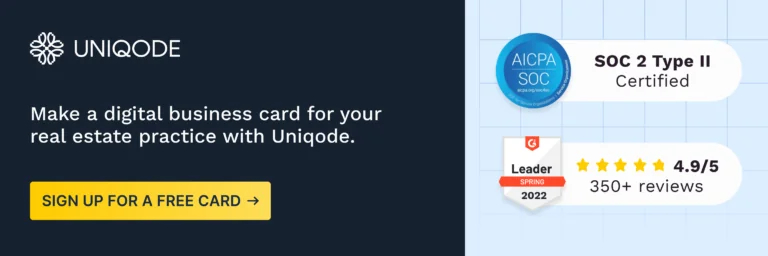
Frequently asked questions
1. What is lead generation in real estate?
Lead generation in real estate involves capturing and nurturing prospect attention for your listed properties. The goal is consistently generating interest in your offerings and turning that engagement into a sale.
This could translate to initiating interpersonal interactions with local community members and fostering professional relationships with neighborhood vendors, small businesses, investors, or contractors in the real estate industry.
2. What are some effective methods for generating real estate leads?
Use QR codes and DBCs to interact with your prospects in your neighborhood, build awareness for your listings, and establish relationships.
You can host open houses, organize and get involved in local community events, content marketing, and outdoor advertising campaigns to generate leads.
Offering virtual tours (livestreams/pre-recorded)and leveraging interactive elements like QR Codes in advertisements (to redirect prospects) can also be extremely effective.
3. How can I use social media for real estate lead generation?
Publish posts that showcase pre-recorded tours of your listings on your social channels. You could also create short reels/clips that highlight the area the property is listed in or the general neighborhood lifestyle (especially for luxury real estate).
Add a Linkpage in your profile’s bio to direct prospects to the right places based on their query. Curate all your relevant links in one place to simplify the experience for potential customers.
4. What are some common lead generation challenges real estate agents face?
Real estate agents often face challenges such as high market competition, inconsistent lead flow, and low lead-to-client conversion rates. Additional difficulties include adapting to market shifts, managing the cost of lead-gen tools, and finding time to nurture prospects effectively.
5. What are For Sale By Owner (FSBO) leads?
FSBO (For Sale By Owner) leads are homeowners who attempt to sell their property without using a real estate agent. These sellers usually aim to avoid commission fees, making them ideal targets for agents offering professional selling assistance.
6. Which are the best lead generation companies for real estate agents?
The best lead generation companies for real estate agents in 2025 include Market Leader, SmartZip, Zurple, Offrs, Catalyze AI, and Zillow Premier Agent. These platforms provide high-quality leads and tools to manage and convert them efficiently.
7. How do real estate agents get more listings?
Agents can increase their listings by leveraging their personal networks, attending local events, maintaining an active online presence, sharing market insights, and consistently following up with potential sellers.
8. What are the most effective ways to generate real estate leads?
Effective lead generation strategies include:
- Building and nurturing your sphere of influence
- Hosting open houses and virtual tours
- Engaging on social media platforms
- Utilizing agent-to-agent referrals
- Implementing cold calling and direct mail campaigns
- Creating informative content such as blogs and videos
- Running targeted online advertising
9. How can new agents generate leads without a large budget?
New agents can generate real estate leads without spending much by focusing on their existing network, attending community events, using free social media tools, hosting open houses, and collaborating with other agents for referral opportunities.
10. What tools can assist in managing and nurturing leads in real estate?
Top tools for managing real estate leads include CRMs like Salesforce, HubSpot, and Zoho CRM. These platforms help agents track interactions, automate follow-ups, and stay organized throughout the lead nurturing process.
Shashank is a content marketer at Uniqode who turned to writing to pursue his natural calling after 2+ years of working in the product team. He aims to educate folks on the brilliant yet underrated technology of QR Codes. With more than a dozen Tofu and Mofu pieces under his belt, he explores how QR Codes can be used to solve challenges for businesses across all verticals. While he’s not educating users on the benefits of QR Codes, he’s also a student of the evolving marketing landscape.









